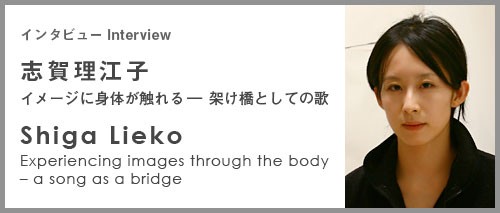
Interview: Sumitomo Fumihiko
Leaping to another solid reality pictured in my mind
My first introduction to photography was a compact camera with an auto-focus function that I used for my high school sports day. After the event, there was still some film left. I thought I should finish it, so I took some more photographs; firstly just a photo of my desk as it was. I then changed the position of a glass on the desk. Click. Changed the position again. Click. I just shot without thinking too much until the roll was finished. After I got the film developed and looked at the photographs of my desk, I found them strange, because in these images I saw my usual desk as if nothing had happened, but actually the scenes in some had been artificially set up, by purposely changing the position of objects. Moreover, the regular-size prints looked like a ‘certification of reality’, as if to assert that the scenes were not set up, but totally natural. It was a shocking experience, and led to my absorbtion in taking photographs emotionally. This is how I became familiar with photography, so I seldom went out of my way to find something interesting to shoot. Rather I was obsessed by what you might call the ‘set-up method’, creating a scene with the subject in front of me. To me it was all an earth-shaking, shocking secret. I was going through puberty at the time and struggling with a body changing rapidly against my will. So in a way, creating images and photographs was a momentary release. It enabled me to jump to another solid reality I could picture in my mind. It had to be photography and nothing else. For example I didn’t want to paint because I would have had to work using my own hands directly, which I thought weird as the distance between my body and the image was too close. In photography, no matter how much I set up the subject, all I ultimately need to do is release the shutter. Back in those days, I think it was important for me to create distance by shooting images, but after developing they returned as a kind of proof of reality. It was as if I imagined the world inside the pictures was actually true, while the real world was fake. At the same time of course I felt guilty, as if doing something wrong, indulging in a controllable world without facing society and reality, which had finally become more visible to me as I grew older.
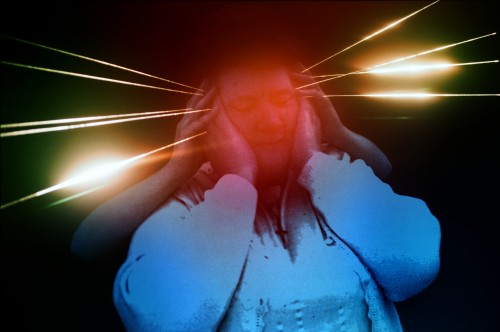 Jane’s Shout from Lilly
Jane’s Shout from Lilly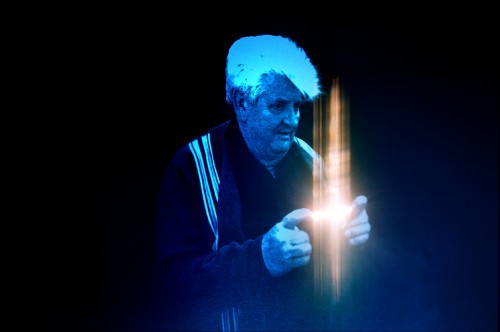 Steven from Lilly
Steven from LillyLilly is a series of photographs I took as an extension of that kind of feeling. Throughout this project I would say it was like confronting my inner violence. Even though I met a lot of people while shooting, I think the relationships with them were extremely one-sided. Hanging a black background curtain on the wall of my apartment building, I set up a tripod, waited for people who lived there, and asked if I could take their photograph. I just remained within a 10-meter radius, taking photographs of others around me, then manipulating the resulting shots by cutting, punching and lighting. Looking back now I feel it was somehow heartless, as if I regarded them as totally imaginary people.
Dealing with the world through photography
Having started photography, I went to art college and exhibited some work after graduation. One day a curator visited one of these exhibitions and asked me to join a project. To be honest I was confused, because taking photographs as an ‘activity’ was a first for me. Photography was part of my daily life, but this was totally different: getting a budget from an organization, with limited time to travel somewhere to complete my ‘artwork’. Until then, I hadn’t found it particularly meaningful to show my personal work.
The origins of Lilly and CANARY are thus completely different. Photography has an aggressive aspect, which is to capture the subject’s body as an image without touching them. When I did Lilly, I think I was already aware of this but tried to calm my inner brutal force through a deliberate physical release. Hence before moving on to CANARY, I had to liberate myself from the inner dilemma I kept having with shooting images, and start to build a structure to connect with the outside world. I was invited to travel to several places, and these visits inspired me to search for new possibilities for images, something which had been an issue for me for a long time.
Making a map to learn about the land
Firstly I decided to make a map of where I was going to visit. I asked the people who lived there to list its bright and dark places, as I wanted to make the map interesting enough to lead me to the land. After receiving their answers, I wrote them down on the map to decide a route to a shooting location. As a result, what I experienced during the trip became the basis of my shooting. I didn’t fix every detail beforehand. It was important to wait for something unexpected or another enormous reality so that the image jumped to a new phase. What the subject or I did on purpose brought an unexpected paradox, followed by an uncontrollable image. In this phase, the relationship between the subject and myself changes as well; we are not just photographer and subject anymore; our conscious minds intersect. I thought I could show the power of the image as a set-up photograph in a positive way.
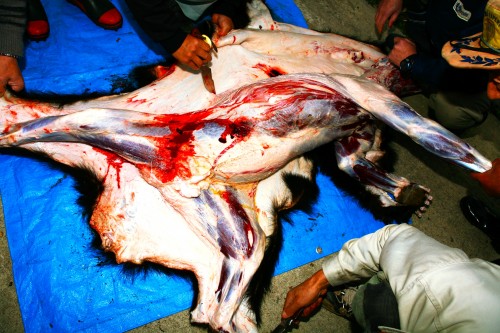 Wrapped in Furs from CANARY
Wrapped in Furs from CANARY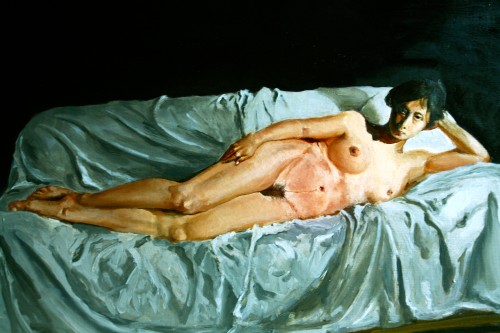 Prevision from CANARY
Prevision from CANARYBrisbane, Sendai, Singapore, I was not interested in the character of the cities very much, because they have a somewhat similar atmosphere, like déjà-vu, don’t they? So I did’t feel ‘wow, this is Sendai’ when I arrived in the city, for instance. Our senses become numbed after visiting several cities with similar landscapes. I read up on the history of the places I was visiting at the library before I went, but how the residents live and what kind of feelings and memories they have is much more significant for me, and cannot be found in books. My map was the only signpost I had to help me reach those.
An edited excerpt from the interview translated by Takimoto Anna and Andrew Thomas published in
DEEP IMAGES – Why do we need images to live?
Edited by the Organizing Committee of the International Festival for Arts and Media Yokohama 2009
¥1,800 + tax ISBN: 978-4-8459-0938-4
Film Art http://www.filmart.co.jp/
In bookstores throughout Japan in early November (earlier at International Festival for Arts and Media Yokohama venues)
Shiga Lieko
Born 1980 in Aichi Prefecture and currently residing in Miyagi. Lilly is a photographic series consisting of shots of the prints of photographs of inhabitants of a public housing estate taken during the time she lived in London. Canary is a field experiment that captures something that transcends both intention and action, using a map based on data collected on the inhabitants of Sendai, Australia and Singapore. The photographic collections Lilly and Canary received the Kimura Ihei Photographic Award in 2008. She won the ICP Infinity Award Young Photographer prize in 2009.
http://www.liekoshiga.com
Showing at the International Festival for Arts and Media Yokohama: CANARY Slide-Show
An exhibition in slide-show format of the signature photographic series released in 2007. The slide-show exhibition will provide an experience of the artist’s unique images and approach to reality that is different from the photo-exhibition format.
http://www.ifamy.jp/programs/single/432/
